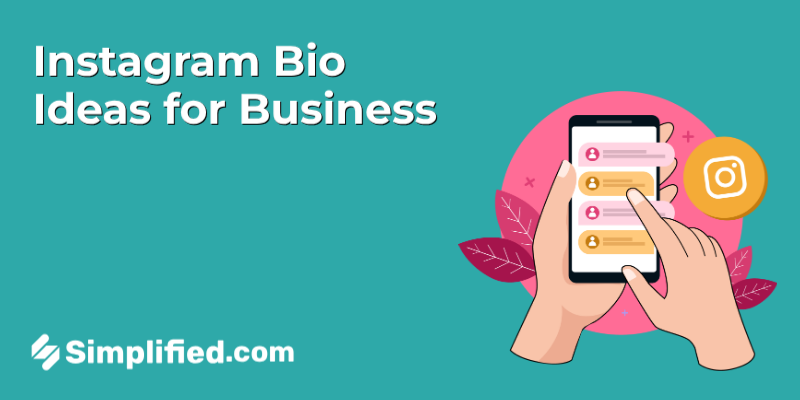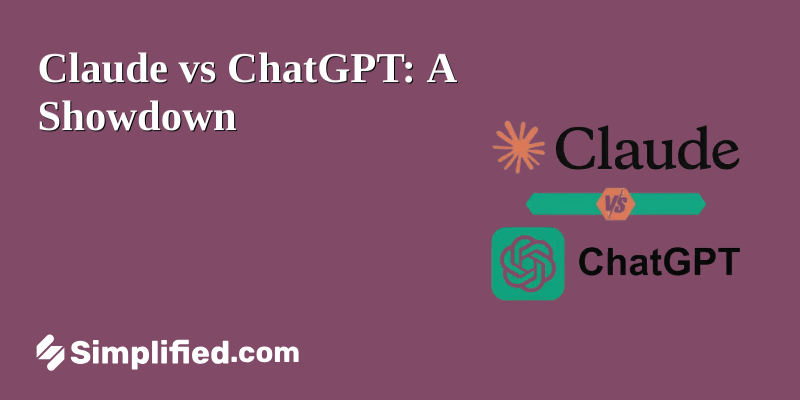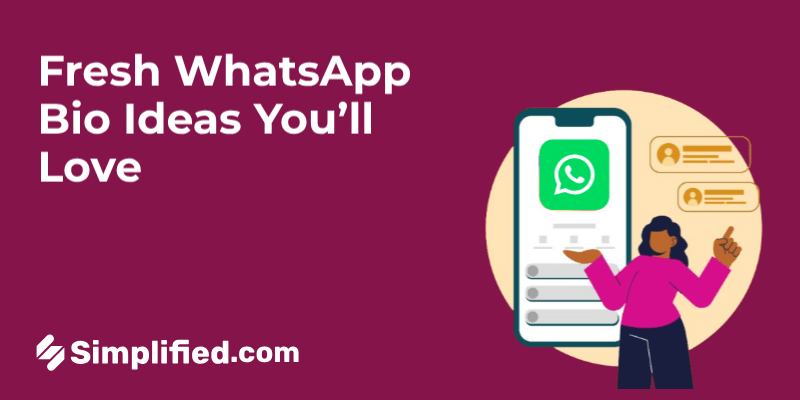Today, newsletters have emerged as a breath of fresh air, delivering curated content directly to our inboxes.
Whether you’re a business owner, a blogger, or a community organizer, newsletters provide a powerful tool to engage, inform, and inspire your audience. But with countless newsletters vying for attention, how do you make yours stand out?
The answer lies in the very first thing your readers encounter — the name of your newsletter. A compelling, catchy name is the gateway to capturing attention, sparking curiosity, and enticing subscribers to dive into the valuable insights you have to offer.
In this blog, we’ve curated a list of over 70 amazing newsletter name ideas to inspire you and help you create a unique one for your brand.
Why Focus on Newsletter Names?
The title of your newsletter can make or break your email marketing effort. Most people are swarmed by hundreds of emails that they don’t even open.
To stand out in that swarm, you need newsletter names that aren’t pushy and are memorable and attention-grabbing without being a cliché.
Striking that kind of balance can be intimidating. An easy way to assist your brainstorming efforts is by using a newsletter name generator like Simplified.
But even for that to work, it is important to understand what makes a great newsletter name and how to come up with one that reflects your brand’s personality and offerings perfectly.
Ready to find out how? Read on.
8 Strategies to Help You Come Up With Newsletter Names
Discover 8 strategies for creating a compelling newsletter name that resonates with your target audience.
1. Get inside your audience’s head
To create a newsletter that truly works for your marketing strategy, you must step into the shoes of your audience and understand their preferences, interests, and values.
Doing so helps you tailor your newsletter’s tone, ideas, and name to resonate with your readers on a deeper level.
This is because, in this era of short attention spans, discovering how to captivate your audience with your newsletter name is key.
2. Consider the type of content you send
Newsletter names should, in an instant, reflect the kind of content your brand stands for or the type of content you want your audience to read.
Ask yourself: Do you want to create an informative newsletter or one that simply inspires? The answer to this question will influence the kind of words you combine to create a suitable name.
3. Convey your value proposition
You need to make sure that the value proposition of your newsletter is clear and concise. It’s what will help people understand why they should care about it and how they can benefit from it.
This is where you will build a loyal customer base and retain the ones already on board.
4. Test, test, and test again
It is always best to have a few prospective newsletter names in the barrel so that you don’t miss out on the one that will work the best.
Once you have a few names that you like, employ the power of split testing — distribute each name among your subscribers and analyze open rates to identify the name that garners the most engagement.
5. Seek feedback from your audience
Don’t hesitate to involve your subscribers in the naming process. The best way to do this? Seek feedback and suggestions from your audience through surveys, polls, or social media interactions.
Engaging your subscribers not only helps you generate new ideas but also makes them feel valued and part of the community, increasing their loyalty and engagement.
6. Refrain from using “spam-related” words
If you want your emails to maintain high open rates, it’s important to steer clear of words that could potentially trigger spam filters. These words include “cheap,” “for just $xxx,” “earn $,” “trial,” “once in a lifetime,” and “win.”
Being mindful of these words, you can increase the chances of your emails bypassing spam folders and reaching your audience directly.
7. Analyze past email subject lines
Take a moment to review the subject lines and topics you’ve used in previous email campaigns and identify which ones received the highest open rates.
Next, incorporate the keywords and phrases from those subject lines into your newsletter’s name. This makes it much easier to capture your audience’s attention right from the start.
8. Rebrand your newsletter
If you want to stand out from the crowd, consider rebranding your newsletter to entice more sign-ups. Instead of labeling it as a traditional “newsletter,” explore alternative terms that evoke intrigue and captivate potential subscribers.
Experiment with calling it a “report,” “weekly digest,” or explore synonymous words that convey the essence of a newsletter while offering a fresh perspective.
Bonus: Master Email Marketing with these Quick Tips
78 Top-Notch Newsletter Name Ideas
Coming up with a great newsletter name is vital for your brand’s image. So, here are a few tips to come up with names for newsletters based on your niche.
1. The Classic [adjective][noun] Approach
This is a classic method of coming up with a catchy and memorable newsletter name that will stick with your customers. This way, in two words, you can describe what you do with an adjective of your choice.
Here are some examples:
- The Butter Half
- Dense Discovery
- The Thrifty Homesteader
- Unmistakable Creative
- Bake Club
- The Curious Collector
- The Fresh Perspective


2. Wordplay and Puns
One way to show your readers that they are in for an entertaining read once they click is by using puns and wordplay when coming up with names for newsletters.
Such examples include:
- Tech talk
- Sick Leaves
- Writtamins
- Ink-credible Insights
- Extra Paint
- Pawsitive News
- Quill and Chill
- The Espresso Express
- Daily Dose of Purrfection
- Bytes and Bites
3. Your Name
If you have spent the time and effort in building yourself up into a recognizable brand, you should leverage it in any way you can. This also helps in making the newsletter feel like a personal interaction.
Here are some examples:
- Ann Friedman Weekly
- Total Annarchy
- Tina’s Takeaways
- Smith’s Scoop
- The Anderson Angle
- Sarah’s Digest
- Thompson Talks
4. Alliterations
There are very few ways of making a project’s name catchy and memorable than using alliterations. Two-word names with similar leading letters prove to be very memorable.
These examples will make it clear:
- Maker Mind
- RadReads
- Creative Caffeine
- Runner’s Review
- Blissful Bites
- Healthy Habits
- Startup Spotlight
- Monday Morning Memo
- Runner’s Review
- Radiant Reader
- Money Matters
- Playful Palette
- Cozy Corner


5. Timeline Based
One way to have a successful newsletter is consistency. A great way of achieving it is by being on a fixed schedule. This also creates an opportunity for using your scheduling in your naming formula.
Here are a few examples of how that works:
- Sunday Brunch
- SaaS Weekly
- Weekend Wonders
- Monthly Marvels
- Biweekly Buzz
- Seasonal Spotlight
- The Sunday Dispatches
- The Monday Muse
- Weekend Wanderlust
- The Morning Brew
6. Blog/Website Name
Just like your own name represents your brand, so does your blog’s name or website. Your blog or website might be a digital entity that is recognizable and links your email marketing efforts to your brand.
You can simply go with “The [blog/website name] Newsletter”, or get creative!
- Tuesday Tribe
- Daily Brew
- Swiss Miss
- ConvertKit Newsletter
- DIY Diva Digest
- The Creative Corner Gazette
- Fitness Fusion Dispatch
- The Foodie Files Bulletin
- The Style Spotter Newsletter
7. Industry-Specific
These kinds of newsletter names incorporate specialized language that resonates with a particular audience, drawing their interest.
Doing this can effectively create an exclusive atmosphere for the newsletter, appealing to a specific set of followers. Here are some examples:
- The Code Breaker (for a software development newsletter)
- The Market Insider (for a financial analyst newsletter)
- Health Buzz (for a healthcare professional newsletter)
- Taste Testers Digest (for a food critic or culinary newsletter)
- The Trend Tracker (for a fashion industry newsletter)
- Ecolingo Echo (catering to environmentalists or sustainability advocates)
- The Green Thumb Gazette (for a gardening enthusiasts newsletter)
- Mind Matters (for a psychology or mental health newsletter)
- Exhibit A (for a law firm or lawyer association newsletter)
- The Gear Guru (for an outdoor gear and adventure newsletter)
- The Traveler’s Tidings (for travel enthusiasts)
- The Artifacts Archive (for an archaeology or history newsletter)


8. Review-Based
If you’re starting a newsletter focused on product reviews, you can easily incorporate the keyword or niche of the products you’ll be reviewing. You can then follow it up with the term “review” or choose a synonym such as “reports,” or “analysis.”
Check out some examples:
- The Gadget Analysis
- Beauty Buzz Reviews
- Tech Talk Report
- Fashion Critiques
- Culinary Delights Review
- Home Decor Digest
- Pet Lovers Review
- Health and Wellness Reports
- Fashionista Feedback
- Gaming Geek Reviews
Bonus: 100+ Captivating Podcast Name Ideas to Inspire Your Next Show
Wrapping Up [+Free Newsletter Copy Generator]
Now that you know what kind of name to use, it’s time to get creative. There are tons of different ways to come up with names for newsletters, and we could go on forever talking about them.
However, coming up with creative and original newsletter names can sometimes be overwhelming. That’s why you need a tool that supports your creative journey!
With Simplified AI Writer, you can create not only engaging newsletter names but also enticing copy in minutes.
Imagine having access to 70+ writing templates, 10+ diverse writing tones, and the ability to create your newsletters in over 30 languages. Whether your audience is just around the corner or spread across the globe, Simplified’s got you covered!
But wait, there’s more! Not only can you unlock the potential of the AI Writer, but you can also design visually stunning newsletters, create captivating videos, and effortlessly schedule content for your social media platforms.
And guess what? All of these amazing features are available absolutely free under the “Free Forever” plan! So, what are you waiting for?

.png)



























